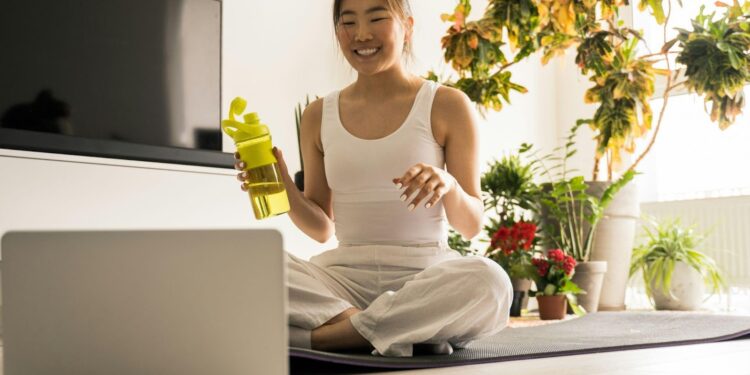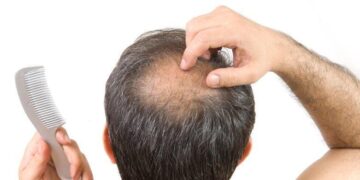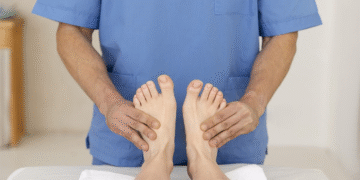Image from Unsplash
In a world where commutes, meetings, deadlines, and texts all compete for your attention, peace of mind can feel like a luxury—reserved for wellness retreats or weekends you never get. But a growing number of people are realizing you don’t need to disappear to the mountains or meditate for an hour to feel better. You just need to reset—frequently and intentionally.
Enter the rise of micro-wellness.
These tiny, practical habits—breathing techniques, short walks, momentary digital pauses, or low-commitment tools like Budpop—are creating ripple effects in how people manage stress and improve focus. They’re not trying to replace therapy, medication, or longer routines. Instead, they fill the gaps in a jam-packed day with quick, calming, and deeply personal check-ins.
Let’s unpack what micro-wellness is, why it works, and how you can make it part of your everyday rhythm.
What Is Micro-Wellness?
Micro-wellness is the intentional practice of small habits that improve mental, emotional, or physical well-being in under five minutes. It could be as simple as taking three deep breaths between emails or having a calming chew during your afternoon slump. The key is repetition, not duration.
These tools don’t ask for your whole lunch break or a new gym membership. They ask for a moment—maybe two. Over time, those moments compound.
Why It’s Taking Off
The appeal of micro-wellness lies in its realism. Most people can’t devote an hour to yoga every day or cook a macrobiotic meal three times a week. But they can stretch their arms, breathe, step outside, or use a fast-acting supplement to re-center in the middle of a busy workday.
Even public health experts are starting to champion these micro-interventions. According to a study cited by the National Library of Medicine, micro-practices such as breathwork and gratitude journaling have statistically significant impacts on cortisol levels, mood regulation, and even sleep quality over time.These practices are scalable, sustainable, and kind of sneaky in how effective they can be.
Real-World Tools That Actually Fit into Busy Lives
There’s no single formula for building a micro-wellness routine, but here are some commonly used tools and how they naturally fit into everyday life:
A short breathing pause—just sixty seconds before an important call—can help reduce anxiety and center your attention. A few minutes outside before dinner or after lunch can reinvigorate your senses with fresh air and sunlight. A calming sound or a guided meditation in your earbuds as you sip coffee might lower your heart rate and prepare you for the tasks ahead. Jotting down a one-sentence note in a journal—something you’re letting go of, or one thing you’re grateful for—helps train your brain to search for the good amidst chaos.
Each of these tools acts like a mental bookmark—saving your place in the chaos so you can return feeling just a little bit better.
Science-Backed Benefits of Small Habits
While micro-wellness might sound like feel-good fluff, research is starting to show otherwise.
According to the National Center for Complementary and Integrative Health, practices like meditation, controlled breathing, and short physical activity breaks can lead to measurable decreases in blood pressure, heart rate, and anxiety over time. These results don’t require hours of effort. In many cases, as little as 5–10 minutes a day can yield noticeable results when practiced consistently.
That’s the point. Micro-wellness isn’t a one-off—it’s an accumulating investment.
How to Start a Micro-Wellness Habit
Image from Unsplash
Begin small. Really small. Pick one micro-practice and tie it to a daily activity you already do. Try deep breathing for one minute right before you open your inbox in the morning. Or keep a sticky note on your monitor that says, “Pause and stretch” at 3:00 PM every day.
Replace your mid-morning doomscrolling break with a five-minute walk around the block. Or have afternoon tea and spend that moment in silence. It doesn’t have to be dramatic. In fact, the less dramatic, the better. The point is to build consistency and create a foundation of small wins throughout your day.
Why This Matters More Than Ever
We’re living through a time when mental bandwidth is maxed out. Many workers are experiencing what psychologists call “cognitive overload”—a state where even simple decisions feel exhausting.
Layer that with pandemic burnout, tech fatigue, and the pressure to always “optimize” and you get a generation of people who are not just tired—but frayed.
Micro-wellness is a counterbalance to that. It isn’t flashy or loud. It doesn’t need a filter or a subscription. It just works, because it gives you permission to pause without permission from anyone else.
Who Benefits from Micro-Wellness?
You don’t need to be chronically stressed to benefit from these practices. They’re ideal for:
- Office workers balancing meetings and deadlines
- Parents navigating non-stop family demands
- Students juggling coursework and digital overwhelm
- Creatives needing to mentally recharge between sprints
- Remote workers looking for a reset between digital meetings
In short: anyone with a brain and a calendar.
The Pitfalls to Avoid
While micro-wellness is helpful, it’s not a cure-all. Don’t fall into the trap of thinking that five minutes of journaling replaces the need for rest, boundaries, or—when necessary—professional support. Also, avoid overcomplicating it. Micro-wellness isn’t about doing everything. It’s about doing something, often. One stretch. One breath. One chew. That’s enough for now.
Micro-wellness isn’t about downloading another app or optimizing your breathing technique. It’s about reclaiming space—tiny slivers of it—that belong to you, no matter how busy your schedule gets. Whether it’s a few intentional breaths, a moment outside, the goal is simple: create just enough room to feel like yourself again. That space, however small, is the beginning of something powerful.













